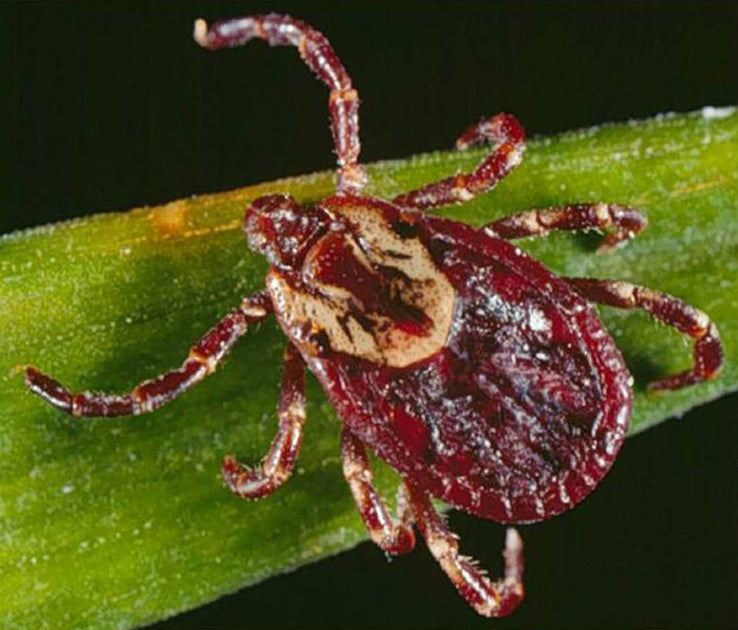

Brown dog ticks in the US prefer to feed on dogs in all 3 life stages.Females can lay up to 5,000 eggs at a time, which take about three weeks to hatch.ģ.) Brown dog ticks have a specific host preferenc: dogs.The time needed for development and molting is dependent on temperature, and is generally faster in warmer temperatures.The life cycle of the brown dog tick can be as short as 2 months, if conditions are favorable.Visit to see more images of this tick at different life stages.Ģ.) Brown dog ticks develop from egg to adult quickly. The brown dog tick has a worldwide distribution due to the ubiquity of its primary host, the domestic dog.In a household or kennel environment, one tick may feed from the same host (dog) for each of these life stages.Brown dog ticks are considered a 3-host tick, meaning that one tick will feed from a different host at each of these three life stages. Brown dog ticks have 3 life stages when they bite animals: larva, nymph, and adult.You should do this especially after you’ve been on a long nature walk. Ideally, you should also be keeping the grass in your garden short so as to prevent ticks from being able to use it as latching-on points.Ĭheck your dog regularly, running your fingers on their skin, and particular in the areas in which ticks like to attach. Anti-tick products can come in different forms - discuss these options with your vet to see which one would work best for your pet.Īnother good way of preventing ticks from attaching to your dog is by applying anti-tick treatments in any cracks and crevices of your home as well as on the vegetation in your garden. The best way to keep your dog safe from brown dog ticks is prevention! Firstly, make sure you use an effective anti-tick product on your dog all throughout the summer months in particular. Wash these on a hot cycle - this is the only way any larva, nymph, or adult brown dog ticks will be exterminated. If you found a tick on your dog, it’s probably a good idea to clean your dog’s bed and blankets as well.

The tick is usually found in association with domestic dogs, and is able to. Don’t try crushing the tick with your fingers. Rhipicephalus sanguineus or the brown dog tick is extremely rare in Wisconsin. You can flush the tick down the toilet for example, but if you prefer throwing the tick away in the bin, make sure you seal it in a plastic bag or in tape first.

Brown Dog Ticks can transmit illnesses to dogs that result in fever, lameness, or anemia. Once you’ve removed the tick, it’s essential to dispose of it correctly so it doesn’t end up on your dog again. A Brown Dog Tick infestation can cripple a canine business and is the reason why tick guards (like collars or edible chews) are standard protocol at shelters and pet hotels. They grow in size as they feed on their host’s blood, with females sometimes reaching half an inch or so. The adult brown dog tick is reddish-brown in colour, has eight legs, and an elongated body. However, they can also be found in cracks and crevices of the home, and, like many other ticks, in vegetation. They will be found primarily in places where the dog population is high, such as kennels. However, they can attach onto other domestic animals, wildlife, or even humans. They remain rare in the UK, but ticks have been found on dogs travelling from other countries.ĭogs are the brown dog tick’s host of choice. However, with climate change increasing overall temperatures throughout Europe, brown dog ticks have increased in number. Brown Dog ticks are Hard ticks that are reddish-brown in color. This is why in the past, they were more common in desert or tropical climates such as Mexico or Florida, for example. The brown dog tick thrives in dry and hot environments. Read on to find out everything you need to know about protecting your dog from the brown dog tick. Females increase in size dramatically when engorged from feeding, while males only stop. When fully fed, the body stretches and changes from reddish-brown to a more blue-gray. Larva have six legs, while nymphs and adults have eight legs. It gets its name because it generally feeds on dogs, but it also bites humans. The adult brown dog tick is reddish-brown and lacks any ornamentation. Though still rare in the UK, they are steadily increasing in number. The brown dog tick is known for its long, small body and bluntly shaped mouth parts. It is the only tick species that can complete its entire life cycle indoors - meaning they are particularly apt to living in our homes and on our pets. Rhipicephalus sanguineus, commonly known as the brown dog tick, is the most widespread tick species in the world.


 0 kommentar(er)
0 kommentar(er)
